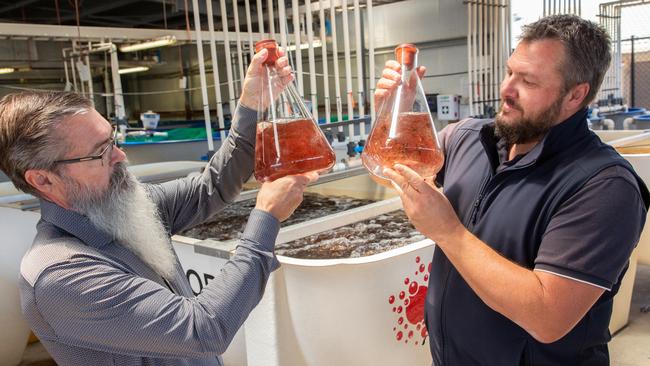Seaweed flowering into a bio-sink for waste material
Australia’s fledgling seaweed industry is already being touted as a solution to reduce methane emissions in livestock, but its capacity as a carbon, nitrogen and phosphorous regulator has the sector excited.

Australia’s fledgling seaweed industry is already being touted as a solution to reduce methane emissions in livestock, but its capacity as a carbon, nitrogen and phosphorous regulator has the sector excited about its potential.
New research has identified the ability of kelp and seaweed to neutralise or remove nutrients from the water column, helping to reduce the damage to coastal ecosystems from nutrient run-off.
It is a second incentive to Australia’s seaweed industry, which is being driven by an interest in using the product as food for humans and livestock.
Speaking at the EvokeAg conference in Adelaide on Wednesday, CH4 Australia general manager Adam Main said the growing asparagopsis seaweed sector was an example of an aquaculture system that had a positive effect on the marine environment.
“Use of marine space doesn’t have to come at a cost,” he said. “While we’re out there growing seaweed to feed a cow to reduce methane, we’re taking in nitrogen, phosphates, carbon out of the water.
“They’re not carbon sinks but they are taking carbon out of that system in a marine environment.”
Asparagopsis, which is native to Australia, can reduce methane emissions in ruminants like cattle and sheep by up to 98 per cent.
It has been identified as a key to the future of the livestock industry as Australia seeks to reduce its emissions to meet its commitments to the global methane pledge to reduce methane emissions by 30 per cent by 2030.
Mr Main said seaweed cultivation could work alongside marine fish farming and help remove excess organic pollutants from the fish and from the ocean.
“Seaweed is actually a remediation bio-sink for waste material,” he said. “The future I see is helping aquaculture ventures that are contributing to the nutrient profile of an area, by incorporating seaweed into that mix, because we need their poo, their waste, effectively, and that will help our seaweed grow and also offsets their contribution to the marine environment.”
It comes as new research, led by University of Queensland PhD candidate Scott Spillias and published this month in the journal Nature Sustainability, found seafood farming, which is in its infancy outside Asia, consistently demonstrated improved water quality and held “strong potential to contribute to sustainability objectives”.
“There is also substantial evidence that seaweed farms can drive carbon cycling on a local scale and that expanded seaweed farming will allow the capture of large quantities of carbon or lead to an increase in the carbon flux from the air to the sea,” the report said.




To join the conversation, please log in. Don't have an account? Register
Join the conversation, you are commenting as Logout